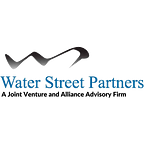Anti-Bribery and Corruption: Partner Screening and Due Diligence in Emerging Market JVs
This memo outlines our view on effective partner screening from a corruption and bribery perspective in emerging market JVs.
OVER THE LAST YEAR, companies like GlaxoSmithKline, Bristol-Myers Squibb, Och-Ziff, and AB InBev joined an illustrious list that includes Siemens, Kellogg Brown Root, Technip, and Eni.
What do they all have in common?
Each has now paid significant fines — and in at least one case, seen jail time for their CEO — related to violations of the U.S. Foreign Corrupt Practices Act that involve joint ventures in emerging markets.
As we have written elsewhere, succeeding in emerging market JVs requires corporate deal-makers, business unit presidents, JV Board members and management to manage a set of risks — including culture, partner alignment, IP protection, information sharing, and political risk — that take on an added premium in emerging markets.
Clearly, corruption and bribery need to be added to this list.
The purpose of this three-part series is to summarize how companies can deal with corruption and bribery in joint ventures, particularly those located in emerging markets. It may be an old and well-known risk, but it is also one where governments have recently tightened the screws — and joint ventures are clearly not immune.
Our intent is not to imply that all emerging market ventures and partners are guilty until proven innocent. Instead, it is to raise awareness of the corruption-related risks that are more likely to occur in emerging market JVs, and share what companies and executives can do about them.
This memo outlines our view on effective partner screening from a corruption and bribery perspective in emerging market JVs.
LOOK BEFORE YOU LEAP
The first step in managing corruption risk is to properly evaluate the geography, industry and potential partners. Ask yourself: “Can we do business legally and ethically in this country or industry?” If the answer is yes, then ask: “Are there strong and interested partners who are willing to embrace our approach to anti-corruption risk management?”
A global mining company regularly evaluates and plots markets on two dimensions — overall economic and strategic attractiveness, and level of corruption risk (Exhibit 1). Markets with high attractiveness but with high corruption risk are ruled off limits, while markets with low corruption risk are pursued. But for those in the middle, the company looks at “toe in the water” strategies to calibrate whether the economic benefits outweigh the risks. One example of such a strategy is to set up a local representative office to get to know the country and understand how other multinationals are dealing with corruption issues. It is also helpful to collect broader data about the industry where you are considering a joint venture.
Exhibit 1: Country Risk vs. Country Reward
Natural Resources JV Tool for Evaluating Emerging Markets
Once comfortable with the market and industry, the anti-corruption focus should shift to partner screening and due diligence. Most companies tend to focus partner screening efforts on assessing the interest and capabilities of a local partner. Simply stated, they ask: is the potential partner willing and able to provide the financial, technical and operational resources needed for the venture? This is a critical question, but we believe that companies should look much harder and earlier at compatibility with the local partner — what kind of values, organization, people, culture and decision-making style does it have? A key part of this is how the local partner approaches anti-corruption risk management, and that is particularly important to look at when they will be controlling or operating the venture.
To get at this, companies should run a comprehensive anti-corruption due diligence process that explores a local partner’s ownership structure, management, relationships with the government, prior history, and internal business practices and controls — including anti-corruption and bribery policies and procedures (Exhibit 2).
